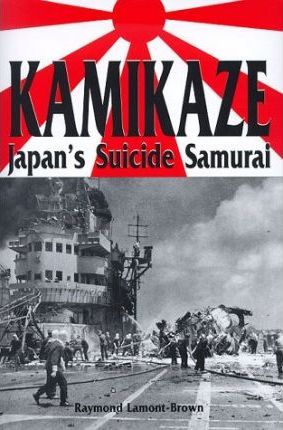Kamikaze: Japan's Suicide Samurai
Japan's kamikaze pilots sacrificed their lives to destroy the enemy's vessels, and offered the last, best hope in a war they had begun to lose. A major expert on Japanese culture uncovers the psychology, myth, and reality of this deadly strategy. Original records and personal testimonies describe the organization and operation of the kamikaze on every front. Here is incomparable insight into understanding these incredible, determined troops. 192 pages, 37 b/w illus.
Japan's kamikaze pilots sacrificed their lives for the possibility of destroying the enemy's vessels and offered the last, best hope of victory in a war they had begun to lose. A major expert on Japanese culture uncovers the psychology, myth, and reality of this deadly strategy. Original records and personal testimonies describe the organization and operation of the kamikaze on every front. An incomparable portrait. Out of the sun they came, Japan's suicide samurai, diving down fast to explode in death and destruction as they hit the decks of Allied war ships. There was no turning back, no hope of survival. Was it a needless sacrifice, a panic strategy in the last, losing days of the war? Or was it a valid military tactic, born of a centuries-old belief in the sanctity of Imperial Japan?
| Author | Raymond Lamont-Brown |
|---|---|
| Publisher | Arms and Armour |
| Place | London |
| Year | 1997 |
| ISBN | 9781854093677 |
| Binding | Hardcover |
| Condition | Very Good |
| Dustjacket Condition | Very Good |
How we describe the condition of our books
We are very proud of the condition of the books we sell (please read our testimonials to find out more!)
New: Exactly as it says.
As New: Pretty much new but shows small signs of having been read; inside it will be clean without any inscriptions or stamps; might contain a remainder mark.
Very Good: Might have some creases on the spine; no hard cracks; maybe slight forward lean and short inscription inside; perhaps very minor bumping on the corners of the book; inside clean but the page edges might be slightly yellowed.
Good: A few creases on the spine, perhaps a forward lean, bumping on corners or shelfwear; maybe an inscription inside or some shelfwear or a small tear or two on the dustjacket; inside clean but page edges might be somewhat yellowed.
Fair: In overall good condition, might have a severe forward lean to the spine, an inscription, bumping to corners; one or two folds on the covers and yellowed pages; in exceptional cases these books might contain some library stamps and stickers or have neat sticky tape which was used to fix a short, closed tear.
Poor: We rarely sell poor condition books, unless the books are in demand and difficult to find in a better condition. Poor condition books are still perfect for a good read, all pages will be intact and none threatening to fall out; most probably a reading copy only.


